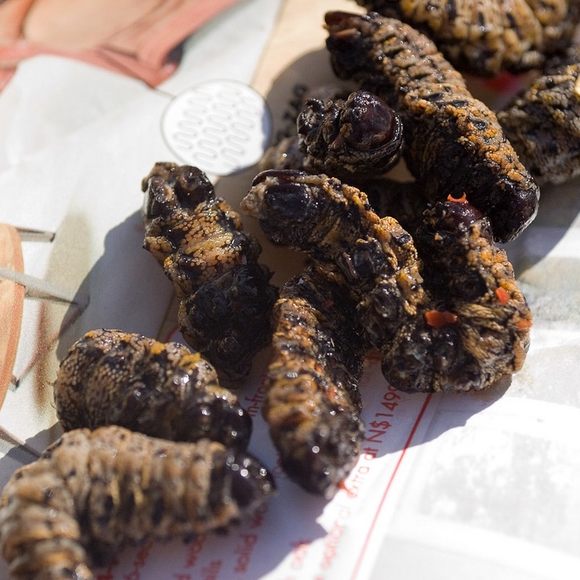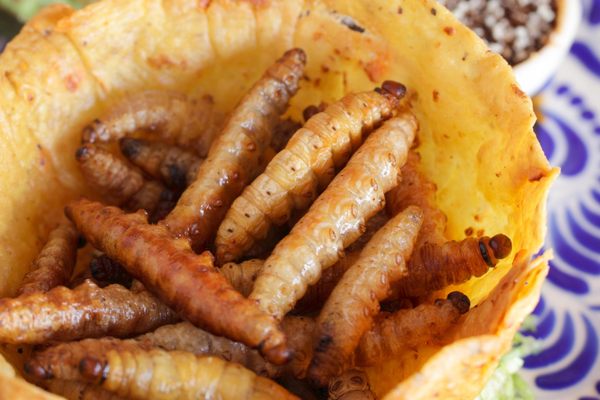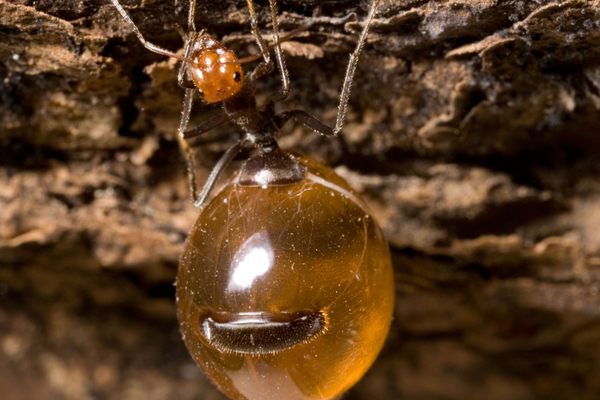Meats & Animal Products
Mopane Worms
Depending on how they're prepared, these caterpillars can taste like everything from tea to a well-done steak.
Eating bugs is hardly new. While some may be slow to adopt the cricket-powered revolution that is very much at our doorsteps, much of the world’s population has long depended on insects to meet their nutritional needs. On the streets of Zimbabwe’s capital city of Harare, the many baskets of mopane worms speak to their quotidian role in the kitchens of southern Africa.
The mopane “worm” is actually the caterpillar form of the Emperor moth (Gonimbrasia belina), which lives nearly its entire life on the mopane tree. It lays its eggs on the tree’s leaves, which the larvae gorge on from the moment they hatch. After literally eating until they burst (they molt their skin four to five times), the worms are ripe for the picking.
Once picked, the worm is pinched open at one end and squeezed to expel a vibrant green mass of half-digested leaves and innards. If any remnants of leaves are left in the worms, they impart a slightly tea-like flavor. The empty body of the worm is then pickled, dried, smoked, and/or fried to the individual’s specific tastes. Some say that the smoked and fried worms are similar in flavor to the jerky-like biltong or a well-done steak, while others cite an earthy, vegetal experience.
Written By
 Gautham Krishnaraj
Gautham Krishnaraj












